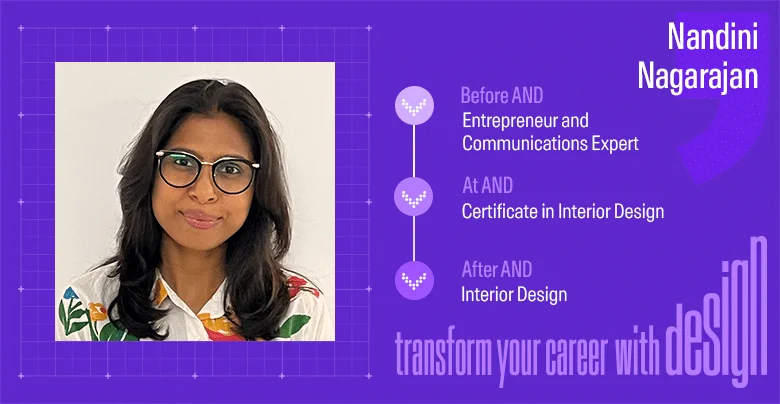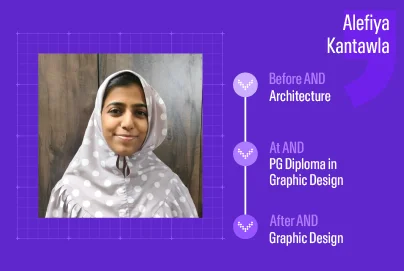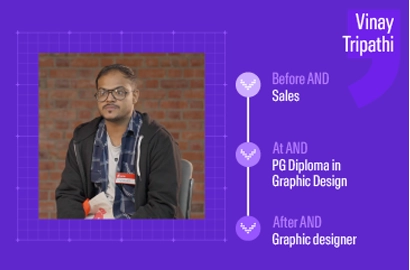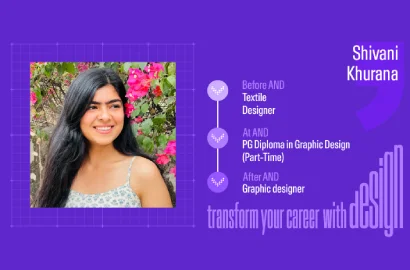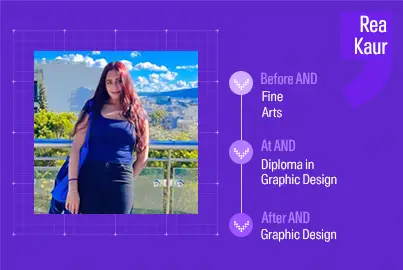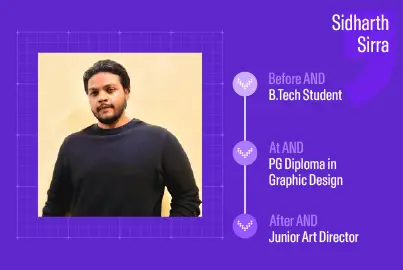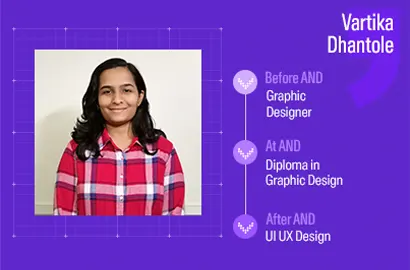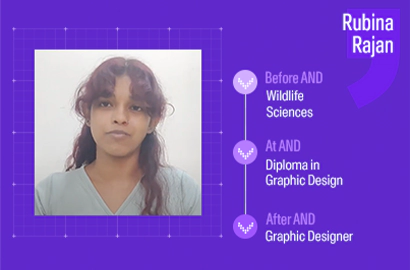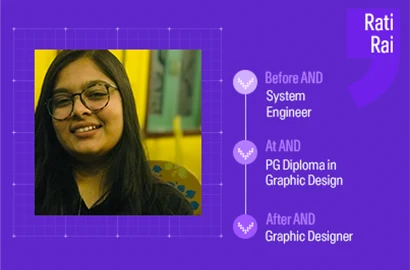Nandini Nagarajan, an entrepreneur and communication expert, speaks about her lifelong passion for interior design and how it drove her to a career in the field. Read on to find out in detail about her story, her ambitions, and the future she envisages as an Interior Designer.
“The course is rigorous. The deadlines are strict and set. But if you are committed to it, it’s achievable.”
Here we are with yet another tale of transformation!
In this edition of the Student Journey, we had the opportunity to speak with Nandini Nagarajan, an AND learner who successfully completed the Certificate course in Interior Design. Our conversation was filled with warmth and showed us the extensive understanding of interior design that Nandini has built over the course duration of 16 weeks. Read on to see how a mother, entrepreneur and communication expert went on to transform her career in design.
Content
- 1) Nandini’s background
- 2) Her passion for Interior Design
- 3) Experience with personal projects
- 4) Why she decided to learn with AND Academy
- 5) Why did she choose to pursue the Certificate course?
- 6) Balancing projects with full-time job experience
- 7) Experience with real-world projects
- 8) Experience with peers in class
- 9) Fundamentals of Interior Design Project
- 10) Residential Interiors Design Project
- 11) Top 3 aspects of learning at AND?
- 12) What’s next for Nandini
- 13) Advice for AND learners
Can you share a little bit about yourself and your background?
It’s been quite a journey for me. I graduated with a Master’s in Communications back in 2007 and initially joined the family business to assist my father. After a while, I got married, had a child, and moved to the UK, where I spent about 5 to 6 years. During my time in London, I ventured into entrepreneurship and co-founded a millet-based healthy food brand. This made sense, considering we noticed that young kids almost always need snacks.
Now, after two years of all this, I realised I wanted to do something for myself and pursue my passion for interior design. Returning to education after a decade made me a bit nervous. However, after a conversation with the Interior Design Course Lead at AND, I found out that while most learners at AND are young, the group is diverse. And that was all the reassurance I needed to pursue a long-lost passion.
I must say, my career trajectory has been quite intriguing—from a Mass Communication background to entrepreneurship, and now diving into the world of interior design.
Your career trajectory is truly fascinating. It’s clear that you have a passion for learning and a drive to pursue your interests, which is commendable.
So, was interior design an interest that blossomed into a passion?
You know, looking back, I feel like interior design is something I should have pursued when I was younger, but for some reason, I didn’t. However, I firmly believe that it’s never too late to follow your passion and invest in education in a field that truly ignites your enthusiasm. I’ve always had a genuine appreciation for well-designed interiors and am the type of person who really takes the time to observe and admire a space. Whenever my friends were around, they often noticed how effortlessly I could pick up on the nuances of design. So, aside from the passion I’ve always had for this field, I’d say it’s a talent that has always come naturally to me.
Oh! That’s wonderful. Pursuing the skill one has a knack for is always worth it.
Is it incorrect of me to assume that you were pursuing projects in interior styling and decorating all this while?
Not at all! Over the past few years, my family has been on the move constantly, which led me to be involved in numerous projects around interior styling and decoration. Between London and Kerala, I had plenty of opportunities to design interiors for my family during their renovations. Wherever I’ve been, I’ve always come across empty spaces that I’d love to transform with my designs. However, this time, I wanted to take things to the next level and acquire all the necessary skills to excel in the field. That’s precisely why I decided to join this course.
Well, that’s applaudable! Learning by doing is often the best way of approaching a field as technical as interior design.
Why did you choose to pursue the Certificate course in Interior Design at AND? I mean, considering you were based out of London there were a lot of options to choose from.
Oh, that’s an interesting question! Just before the COVID situation hit, I was still in London, and I had just started my course at the London Institute. But then, due to some personal reasons, our family decided to move back to India, and I had to drop that course midway. You know, it really bothered me because I’m the kind of person who doesn’t like to leave things unfinished. I prefer seeing things through to completion. So, that’s where AND came into the picture, offering me a way to continue my educational journey in this direction without having to worry about geographical barriers.
I must tell you that I did some serious research to find the right institute. During that process, I came across AND’s website, which, by the way, was very clear and straightforward. They had all the information I needed about the course, the projects, and even a weekly breakdown of the curriculum readily available. It just felt like the perfect fit for me.
I’m glad to hear that by the way! It’s encouraging to know we can provide the transparency and clarity that learners need.

What made you choose the Certificate course instead of the Diploma and PG Diploma?
As a working professional with a five-year-old son, finding a time-efficient course was crucial for me. Initially, I felt hesitant about committing to an 8-month-long course. I wanted a more manageable and achievable goal and the four-month course was a perfect fit in that regard. AND’s offering of stackable courses also played a significant role in my decision-making process. The flexibility to seamlessly transition from the Certificate course in Interior Design to the Diploma course with just four additional months of studying was a considerable advantage.
Enrolling into the Certificate course gave me the freedom to assess my progress and decide whether I wanted to pursue further studies. It was a good option to have.
Additionally, the fact that the Certificate course focused on a real-world residential design project was a major selling point for me. I felt that it best aligned with my learning needs and desired learning outcomes, which made it the ideal choice for me.
Overall, I approached this decision thoughtfully, considering my responsibilities and aspirations, and I’m confident that the Certificate course will be a valuable step towards achieving my goals in interior design.
What was your experience like pursuing a course while having a full-time job?
Well, I have to look at it from the perspective of a mother first. As a mother, I had gotten very used to getting very little sleep and a lot of activity in between those few cherished moments. Thanks to this, I barely had any trouble working with a tight and erratic schedule. So from that perspective, while the course was challenging, it was totally doable.
The course is rigorous. The deadlines are strict and set. But if you are committed to it, it’s achievable. But one of the things that worked in my favour was that the classes were scheduled three times a week so if you are good with time management and allocating time to different activities you will be alright. And you have no choice but to learn time management. Initially, it might come across as a big shock, especially the first ten days when you need to juggle everything but you eventually ease into a routine.
With a decade-long gap between your last academic pursuit and this one, was it exciting to take on a course that let you work on real-world projects?
I must admit, I really enjoyed it; especially the first module. But if I’m being completely honest, I was a little nervous at the start, particularly when it came to tackling complex software programs. And that feeling of apprehension grew when I saw how effortlessly my peers with engineering backgrounds were picking up the concepts and lessons. It seemed like they made sense of everything in the snap of a finger!
These peers I’m speaking of came with an innate ability to use the software. However, my mentors assured me that not only would I be able to keep up, but also excel in whatever was being taught or discussed in class. And I have to say, the student assistance team was incredibly supportive and effective.
Going back to the main point, the first module stood out to me, especially with the small tasks and assignments that were part of the fundamentals of the interior design project. They were fantastic at helping me grasp the fundamental concepts. Surprisingly, the first module was a lot of fun. The whole time, we were fully engaged and pretty busy, working to complete assignments and projects within the given deadlines.
Wow! Being around young learners who were naturally adept at software and catching onto concepts fast must have been intellectually stimulating.
So, how was your experience with your peers in class?
Oh, my peer group was so diverse! We had learners hailing from every corner of the country. Some were maths and physics graduates, while others were juggling this course alongside their full-time academic commitments. And you know what? It was heartening to see that I was not the only older individual in the class. It was a really interesting mix of people, to be honest.
Amidst all the classwork and assignments, there were these moments when I found myself engaged in conversations with truly fascinating individuals. The Microsoft Teams messaging groups played a big role in fostering collaboration, communication, and maybe even a sense of camaraderie among us.
What really stood out to me about my fellow learners was their constant drive to do more, to improve, and to learn. That kind of motivation is truly contagious and keeps someone like me inspired. And when you combine that with the insightful guidance provided by our Course Lead, Rahat Varma, it forms a solid foundation, one you can revisit and build upon regularly to keep learning and growing.
Could we take a look at your Fundamentals of Interior Design project?
Sure thing! To sum it up, the Fundamentals of Interior Design project and, in fact, the first module was all about the core concepts of interior design. We explored crucial elements like space, lines, forms, textures, patterns, lights, and colours. The initial task was to associate images that represented these terms, which set the foundation. What followed was a series of practical tasks that each dealt with one concept that was vital to our learning
Then came the engaging “Dots and Lines Activity.” This involved creating a 3D representation of a space using just paper and pen. We were asked to use everyday items to create the 3D models of our plan. I chose to create a park with a tent in the centre surrounded by lots of trees. This exercise helped us grasp the essence of spatial dimensions.
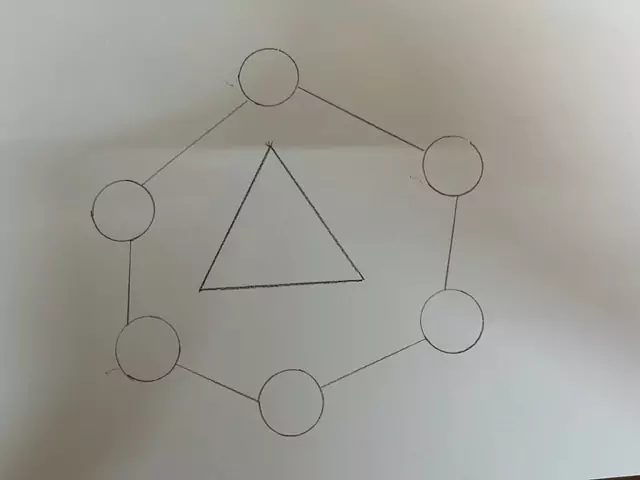
Moving forward, we studied design principles using cut fruits to symbolise elements within an interior space for which I decided to use a carton box. This interactive approach solidified our understanding of concepts like rhythm, movement, contrast, and emphasis. For instance, you can see that I have placed the plum pieces next to the pineapple and your eyes are naturally drawn to that particular area.
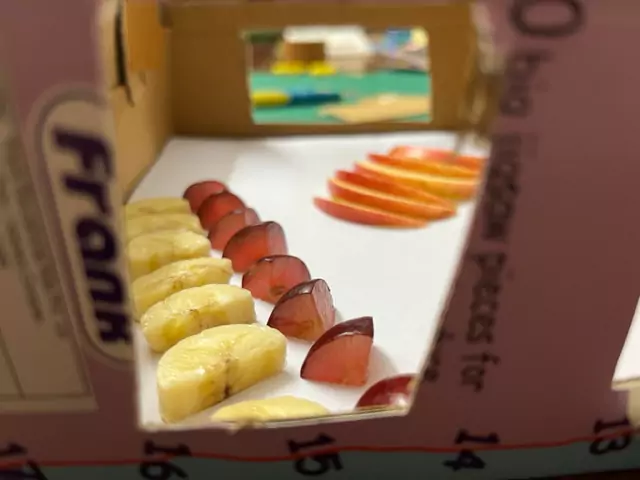
Next, we dived into activity mapping exercises, which essentially broke down why specific parts of a house are used more than others. And then, we ventured into mood mapping—a fascinating exercise that helped us anticipate what a prospective client might be doing at different times of the day in space. Since we were asked to map our movement in our own homes the exercise became more accessible.
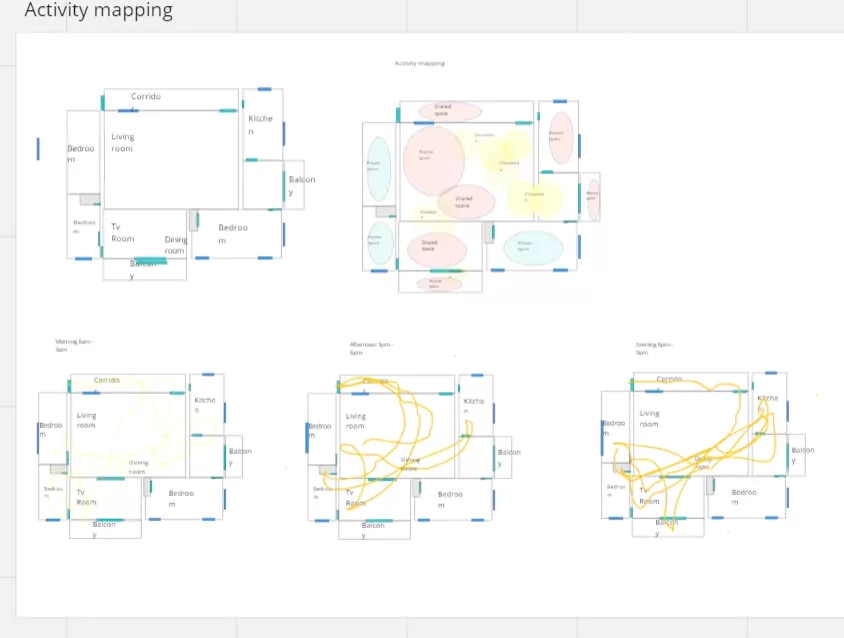
Moving forward, we dived into the collaborative aspects of the field where professionals work closely with clients. We explored the pivotal touchpoints in these interactions to effectively translate the client’s vision into reality. To guide us through this, we engaged in an insightful activity that involved drafting a client’s functional and aesthetic requirements. This step set the groundwork.
Then, we had the opportunity to apply our learnings practically by working with demo clients, all under the guidance of mentors. This experience helped us put theory into action and truly comprehend the process.
The journey continued with a class on anthropometrics and ergonomics. We were tasked with designing both a study table and a dining table, with a focus on these essential concepts. What caught my interest was the way we executed these designs—using chart papers and meticulous measurements. This hands-on approach added a new layer of understanding to the concepts we were learning.
The exercise on teaching light, colour and texture was particularly challenging yet fascinating. We were asked to pick a frame from a film and break down the scene based on its lighting, colours and moods. The concept of lighting was also explored further with another activity where we were required to experiment with warm and cool lighting options and see how it interacted with the space.
To get acquainted with the software, we were given a task—redesigning a space in our homes digitally. I decided to work on my office first, transforming it into a modern version of itself.
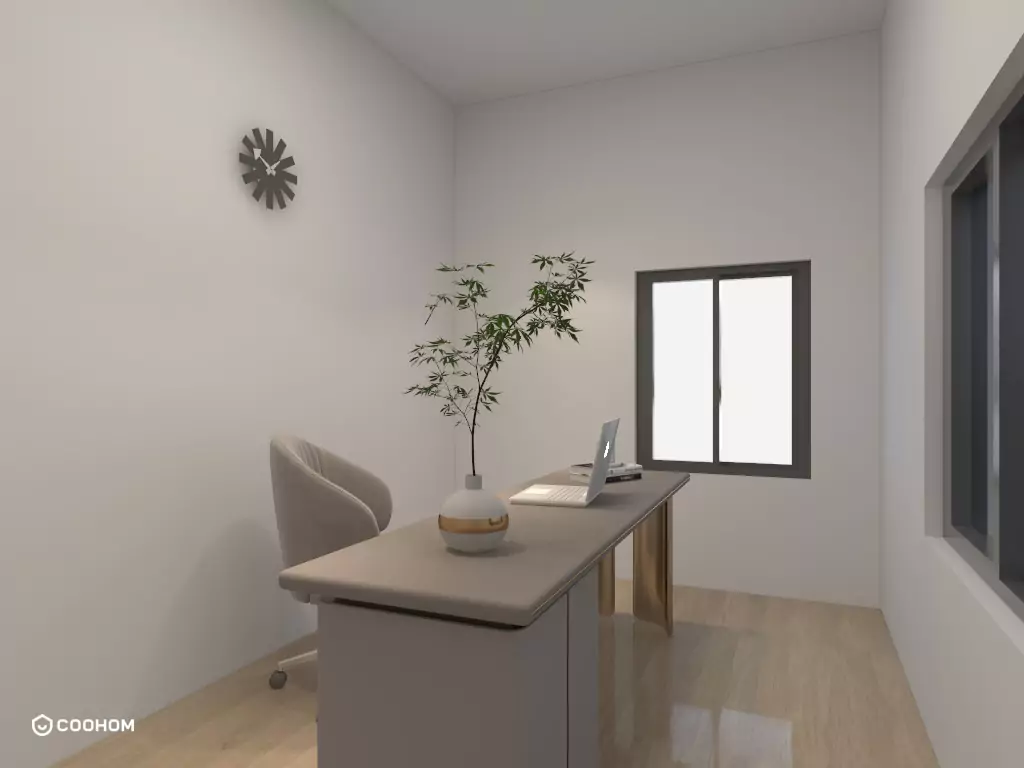
Then, I took on the challenge of turning it into a vibrant child’s playroom. It was a fun way to practise and apply what we were learning.

All of these factors, which play a pivotal role in an interior designer’s decisions about stylizing a space while ensuring its functionality, were thoughtfully explained and practically applied.
Could you take us through your residential interior project?
The residential aspect was a crucial part of our second module. A significant part of this module involved choosing a real-world client for whom we’ll design a bedroom. My parents were renovating their space at the time, hence, I chose them as my clients.
This project aims to carry learners through each step of client interaction and the technical process so that we practically do what an interior designer does on a daily basis. True to that, we first needed to understand the client’s background, occupation, and location. The location’s climate also played a big role – for example, we had to consider different designs for warmer and colder places. This information was the foundation for our design choices, similar to how user research sets the base for a project.
The next step was to use visuals like pictures of the room with detailed notes to fully grasp the client’s needs, both practical and emotional. After taking architectural photos, I combined those observations with Vaastu principles, which we studied. Surprisingly, the best spot for the bedroom as per Vastu was where the current car park is.

Talking with my parents helped a lot. We started with a floor plan, turned it into 3D models, and shared this with mentors and clients. Then, we delved deeper into my parents’ preferences – everything from lighting, drapes, flooring, and ceilings, right up to bed types and closet sizes.
All my findings, through client interactions, were divided into two parts – what the client absolutely needs (functional) and what they like (emotional). This helped me create a comprehensive catalogue. I also made a detailed questionnaire that covered all aspects of a comfy space, and the answers led us to the theme of the room. Eventually, there were three mood boards to choose from, with layout options that showed how furniture could be arranged, and one of these layouts followed Vaastu rules. The final theme my parents and I settled on was ethnic minimalism, which also aligns with Vaastu principles.

Once the theme and layout were decided, I enhanced the layouts using elements like furniture and drapes. After this, I worked on the colour palettes, textures, furnishings, and lighting options, eventually offering three distinct choices for each of these elements.
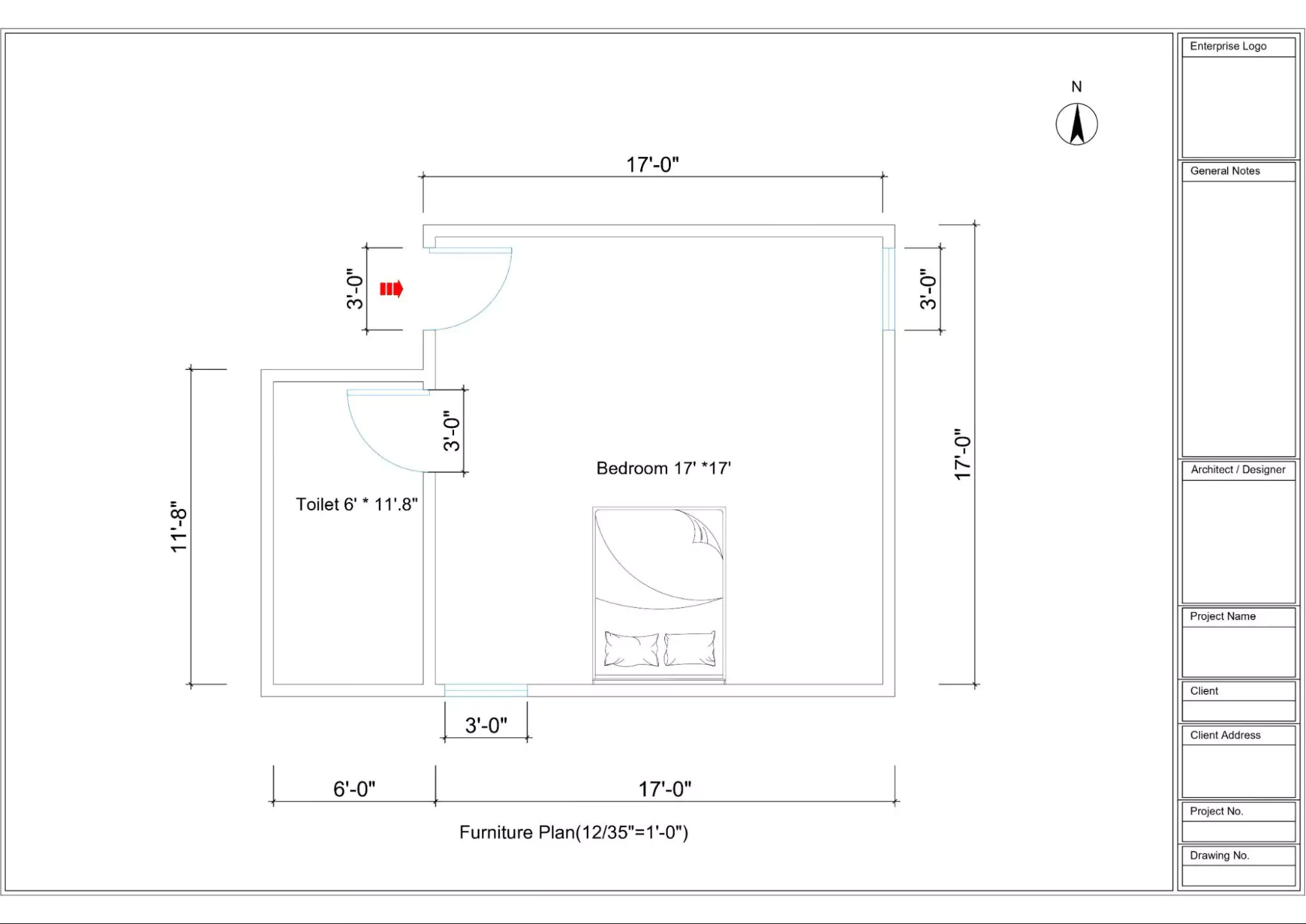
Next, I create a detailed list of everything needed – from furniture to fittings. This list served as a visual reference and a practical guide for procurement. To sum up, we followed a design process that brought together the theme and functionality of the interior space, blending emotional resonance with careful planning. And the result is one I’m quite proud of.

These activities are quite practical. But were these helpful?
I had no knowledge about these concepts, so learning them turned out to be incredibly important for me. I was completely unfamiliar with these fundamental ideas, making it essential to grasp them. And you know what? The way I learned these concepts was even better – it made a world of difference.
That is great to hear. Also, I think the digital renders of your office look fantastic. I am unsure as to why you were worrying about the software. You did a splendid job. Kudos!
Well, thank you very much. I picked all this up during the course itself. I must admit that I was not very skilled when it comes to such things, so it was during the course that we got introduced to Coohoom and I developed proficiency. Once you get a hang of it, it is pretty simple.
What have been the top 3 aspects of learning at AND?
It’s going to be difficult to keep it down to three.
I had my doubts about enrolling in an online course, you know? But even with a full-time job and taking care of my child, this course seemed to slot into my schedule quite naturally. Even though I had some reservations when I signed up, I’ve realised that the online format of the course has been nothing short of a blessing. I vividly recall sharing my concerns with Rahat—worries about the course possibly not covering everything comprehensively, and the challenge of recreating a classroom atmosphere digitally. Surprisingly, not only were these worries addressed in that conversation but also throughout the course’s progression.
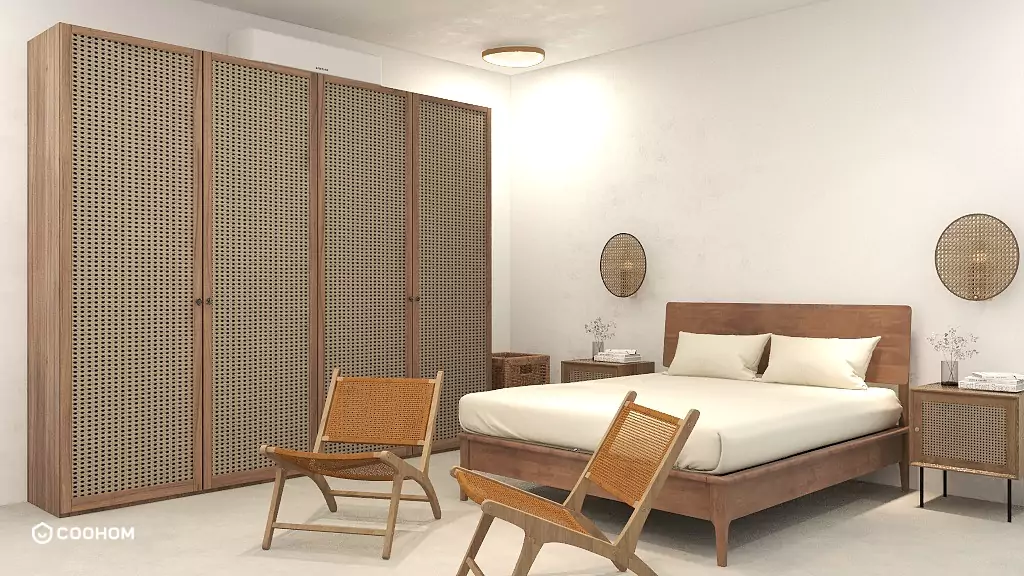
Here’s the thing: the course is remarkably well-structured. It’s packed with deadlines and captivating projects, yet it also throws in some breathing space every now and then. There’s always a healthy dose of pressure maintained throughout, which, in my view, is quite beneficial. All you need to do is take that first step and commit to learning, which in turn leads to self-improvement across any domain.
Lastly, the exposure we gained through the people I encountered in the course was invaluable, be it the core faculty, my peers, the visiting faculty, or my parents who donned the hats of mock clients during the time I was working on the real-world commercial interior design project. Their perspectives added freshness and novelty to our learning experience and listening to them was always an intriguing experience.
Well, this is probably your first time addressing your parents as clients. Isn’t it?
Yes. And I am so glad to have gotten that opportunity. Especially considering that it was my parents I really got to exercise my knowledge openly. I am certain that it would have been challenging if I wouldn’t have them as clients as opposed to someone unknown. But that doesn’t necessarily mean that it made it any easier. It still required me to put in the work but the conversation was definitely richer.
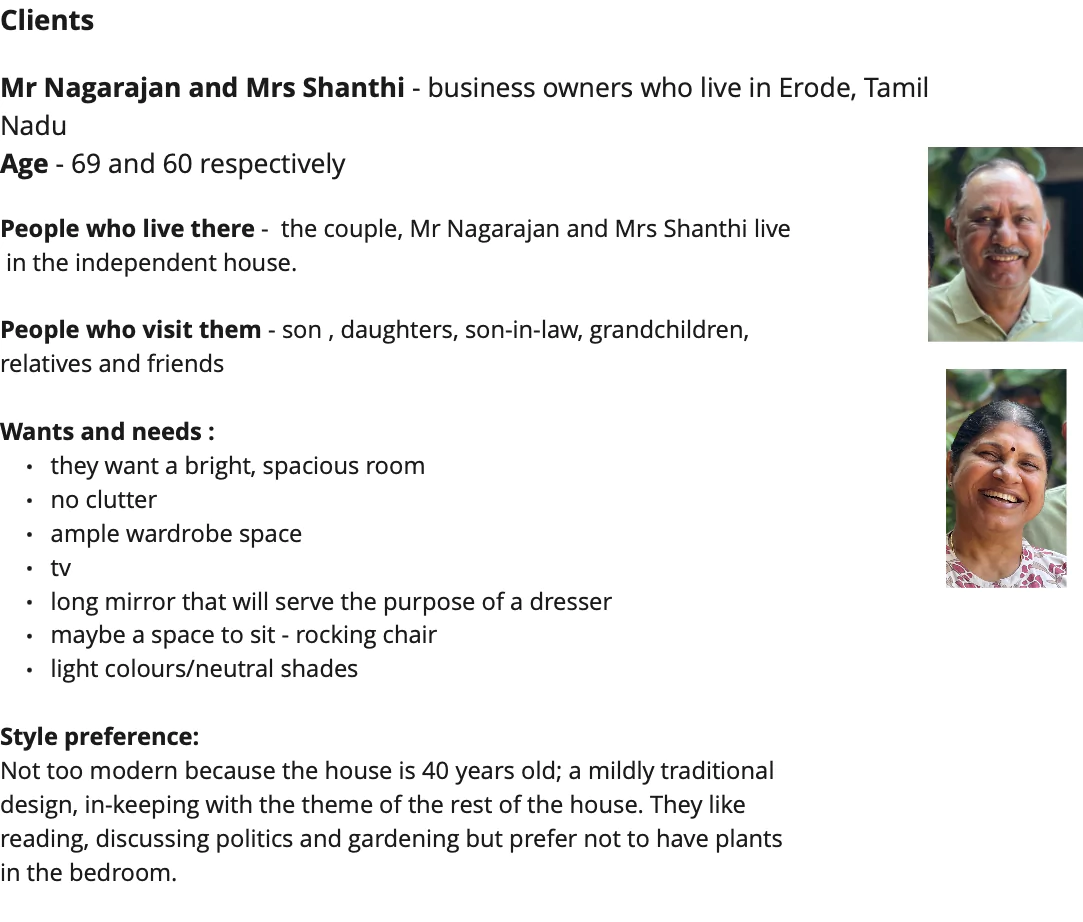
It’s fascinating to hear you mention deadlines twice. It seems you were in search of a rigorous and demanding course that presented a sizeable challenge. Almost like you wanted it to be jam-packed.
Haha! I can’t claim that I wanted it to be jam-packed. It just turned out to be jam-packed. I remember I joined on a Monday, and exactly a week prior to that I had gotten on call with my friends to tell them I am looking for such a course and they pointed me in this direction and, like I said, I found the website to be extremely informative and straightforward. In no time, I found myself attending my first session at AND.
Are you going to explore the field of interior design as a profession?
Most definitely. I’m gearing up to pursue a professional career in interior design. Exciting news—I have an internship opportunity on the horizon! It’s based in Coimbatore, and I’m really looking forward to diving into it and getting some hands-on experience in the field.
What would you say to someone considering the Interior Design Course at AND Academy?
If you’re interested in something, why not give it a try? Take the leap and just do it. Speaking of which, AND Academy is a fantastic place to fuel your learning journey. The courses they offer are top-notch and their team of professionals is truly exceptional. They provide a range of flexible options to suit your needs. What’s even more remarkable is that if life gets busy and you need to hit the pause button on your learning, that’s totally doable. This feature could be a real game-changer for many people out there.
Well, Nandini, thank you from the bottom of our hearts for this lovely conversation. Your advice is truly invaluable, and we appreciate you sparing time for us today. We’re genuinely excited to witness your journey as a designer and wish you all the success and growth in your future endeavours!
What’s Next?
Wish to walk in Nandini’s footsteps?
Explore our 18-week Certificate Course in Interior Design and discover what it holds beyond what you’ve just read. Embark on your own path in Interior Design!
And if you’re looking for something more extensive we offer a 32-week Certificate course in Interior Design.
Alternatively, if you’re ready to dive headfirst into a comprehensive learning experience, consider enrolling in our 1 year PG Diploma course in Interior Design.
We understand that you might have questions. Reach out to a course advisor, who would be delighted to discuss all the course details and answer your queries during a quick call.
Note: All information and/or data from external sources is believed to be accurate as of the date of publication.

